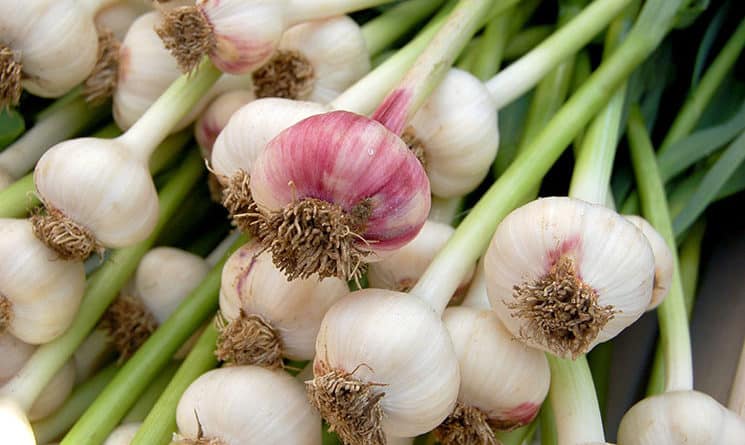Editor’s note: The University of New Hampshire Cooperative Extension provides weekly gardening columns in which Jeremy DeLisle answers questions from local gardeners.
Q: I’d like to grow some garlic, and I’ve heard that mid-October into early November is the traditional planting time. Is this correct, and how do I go about it? Lilly P – Winchester, N.H.
Proper planting makes the difference
A: Garlic is a fun and easy crop to grow, and this is indeed the time of year to plant it. First you’ll need to prepare a planting bed. Garlic prefers a deep, well-drained, fertile soil that’s free of perennial weeds and has a pH between 6.0 and 7.0. Till in a 10-percent nitrogen fertilizer (2 pounds/100 square feet) before planting. Locate a source of “seed garlic” from a local farm, garden center, or seed catalogue, as supermarket garlic may have been treated to prevent sprouting. Hardneck varieties tend to be hardier in our climate.
Separate the individual cloves and plant them 2 to 3 inches deep (pointed side up!) and 6 inches apart. Mulch the bed with 3 to 4 inches of straw or other organic materials such as pine needles, grass clippings, or chopped leaves. Water the bed to help initiate root growth.
If all goes well, each clove will produce a whole bulb. The tiny garlic shoots will pop up above the mulch in early spring. By midsummer, flower stalks (called scapes) begin to grow from the centers of the plants. Clip off the scapes to prevent them from using energy you want the plant to put into sizing up your crop (many growers chop and use the scapes in cooking). Garlic is ready to harvest when most of the foliage has turned brown, usually in mid-July.
After the harvest
Store whole plants in a warm, dry spot with good air circulation until the tops have completely dried. Then remove the stalks with kitchen or pruning shears, and store the heads in mesh bags or an old nylon stocking in a cool, dry location. Save your biggest, best-shaped, disease-free heads for next fall’s seed. For more information, click here.
Jeremy DeLisle is the program coordinator for the UNH Cooperative Extension Education Center. The center answers questions about gardening and more at answers@unh.edu, or by calling 877-398-4769 Monday through Friday, between 9 a.m. and 2 p.m.

